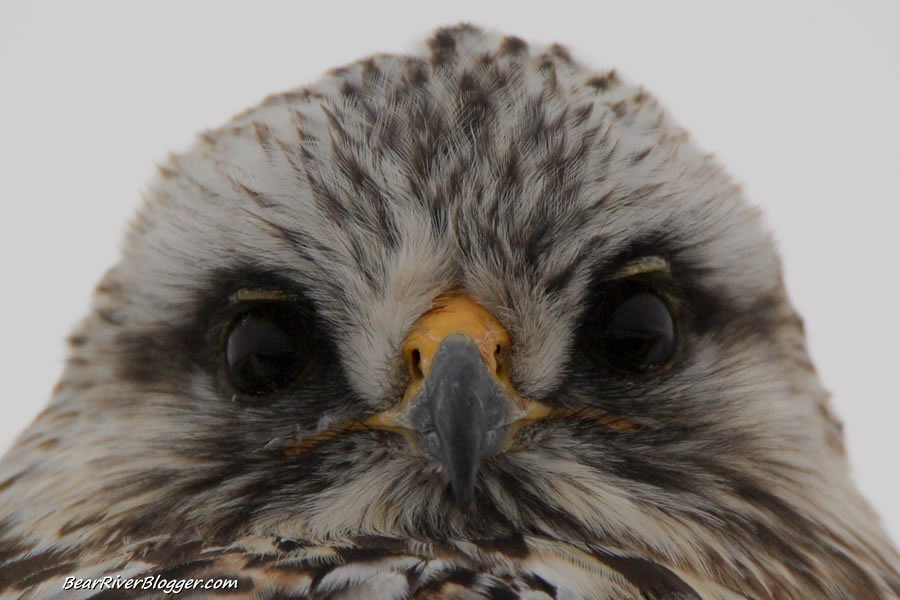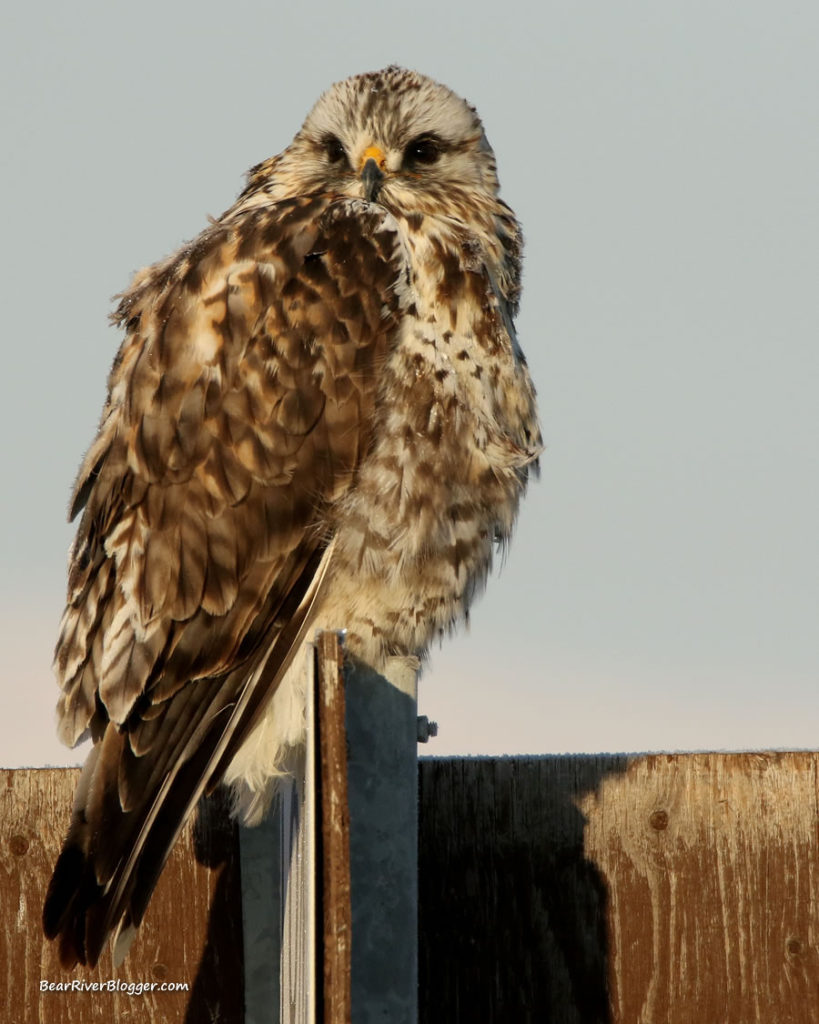Let’s face it, as bird watchers and photographers it is quite a thrill to have an opportunity to get “extra close” to a bird, either to photograph or just admire.
I know this to be true on both accounts as I am both an avid bird watcher and photographer that enjoys getting out in nature in search of our avian friends for either reason.
And as we all know, getting close to a wild bird is, just to be honest here, quite difficult at best.
And some birds seem to be more prone to avoiding close contact with us humans than others.
For me, this is most certainly true with my nemesis the northern harrier, a bird that just refuses at all cost to let me get anywhere near a decent range for photography.
But each winter one bird species, the rough-legged hawk, in fact, travels from the far northern reaches of the arctic tundra oftentimes breaks the traditional mold of the normal bird-human boundary and routinely offers me a quite up close and personal viewing of itself.
Personally, I have been as close as 15 feet to a wild rough-legged hawk without any sign of invading its personal space.
In fact, the most recent instance of this degree happened just a couple of weeks ago on the Bear River Migratory Bird Refuge auto tour route as I was out and about looking for birds to photograph.
Although I will admit it is quite rare when I have been this close to a rough-legged hawk, it is more common than not when I can get within 30 to 40 feet away, something that is quite rare with raptors I must say.
Recently, I heard a theory on why the rough-legged hawk might be a bit more “approachable” than many other birds, and it eludes to them being on a desolate and remote area during the breeding season, a place rarely traversed by humans, let alone vehicles, that the birds just have no fear of them.
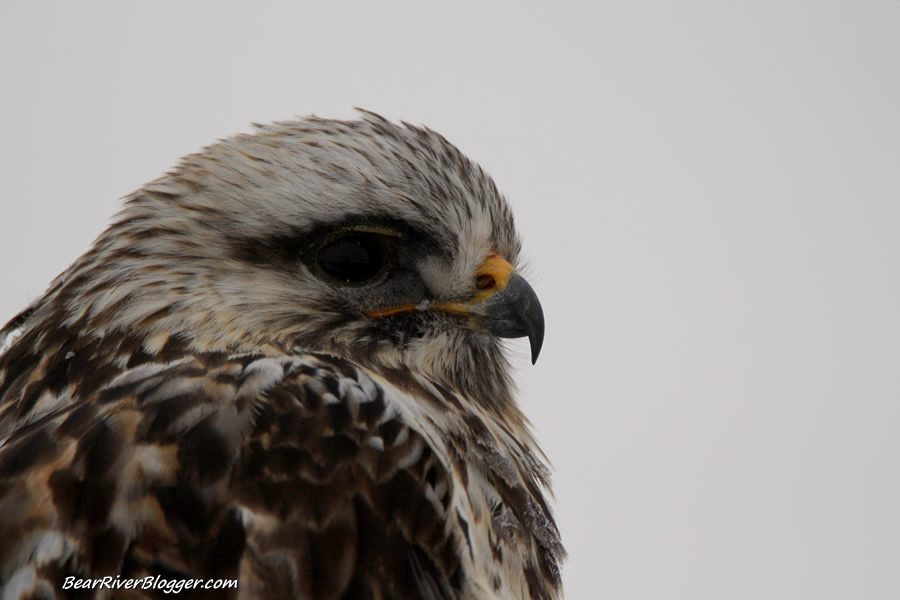
It makes perfect sense to me, if a bird rarely to never sees a human or a vehicle, there is no reason for them to avoid it.
All in all and whatever the reason is for it, I find getting close to the rough-legged hawk a simple task much of the time, way more than just about any other bird I can think of.
For me at least, the key is watching far ahead as I search for birds on the refuge auto tour route.
When I see a rough-legged hawk, or any bird for that matter, perched along the edge of the gravel roadway, I slow my vehicle way down long before I approach the bird.
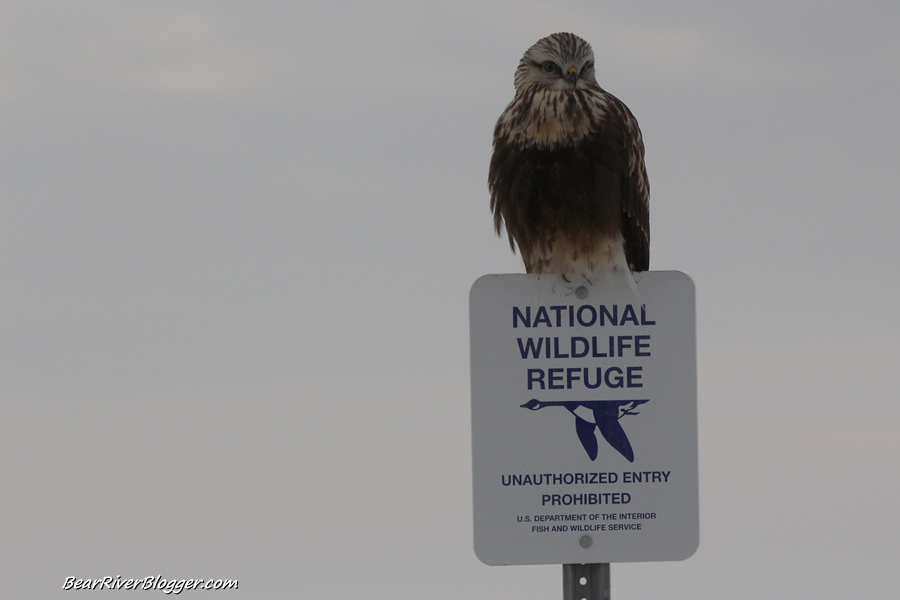
I am of the mindset that sudden changes in speed as you approach a bird cause them to get nervous and, as a result, many times prompt them to fly off.
This is also true when I drive past a perched bird and decide to try and back up for a photo or just a better look.
That rarely-to-never works and it is always best to slow way down before you get to the bird and try and approach it on your first pass.
For the next couple of months, numerous rough-legged hawks will reside on the Bear River Migratory Bird Refuge and are commonly seen on both Forest Street and on the refuge auto tour route.
Both places offer a great opportunity to view and photograph the rough-legged hawk.
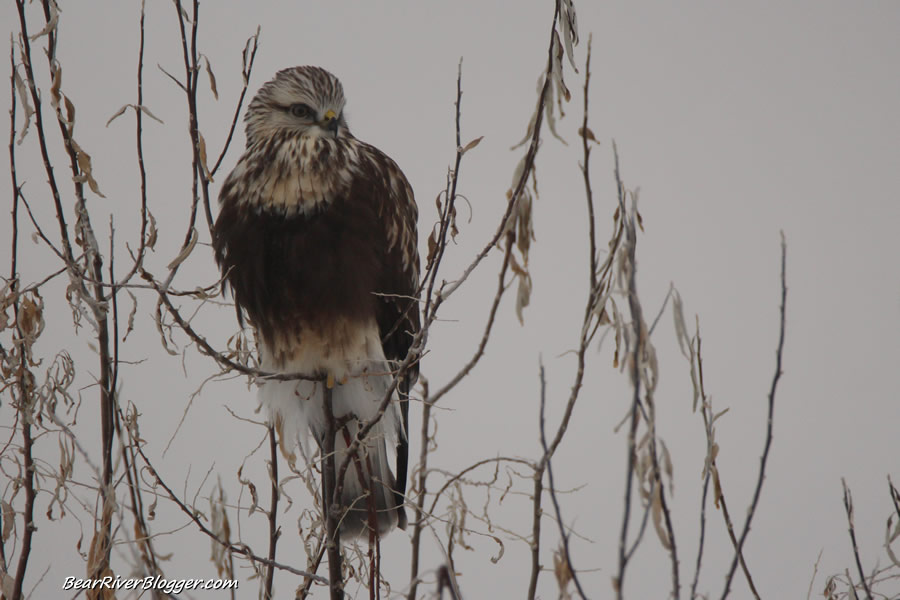
I was just there a couple days ago and counted at least a dozen rough-legged hawks on my trip down Forest Street and around the refuge loop.
Lastly, for those of you that like bird photography as much as I do, I will mention having a bigger lens, at least a 300mm and preferably a 600mm makes photographing birds much easier no matter how close you can get.
For bird photography, my go-to lens is the Tamron 150-600mm, available for most major camera brands by the way.
Sometimes when I am not wanting to carry anything more than just my one standard camera bag, I will do what I can with my 75-300mm lens but if and when I can take more gear, the larger 600mm lens always gets used for bird photography.
Subscribe
Don’t forget to head on over to our subscribe page and sign up for email notifications for future blog posts.
It is my intent to keep posting about what I find on the Bear River Migratory Bird Refuge and elsewhere for any and all who are interested in bird watching and nature-related opportunities to get outside and enjoy as well as photograph the natural world around us.
Occasionally I do post a short video update on my YouTube channel so if video posts are your thing, feel free to head on over to my channel and follow me there.
I am not a videographer by any stretch of the imagination but I do from time to time try and post videos on what I am finding to give a different perspective not available with still photography and blogging.

